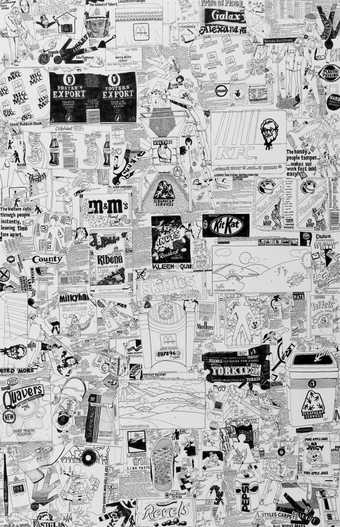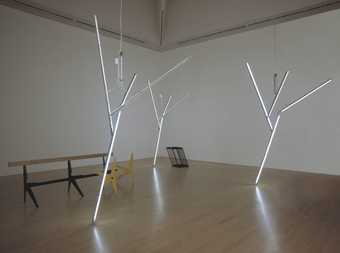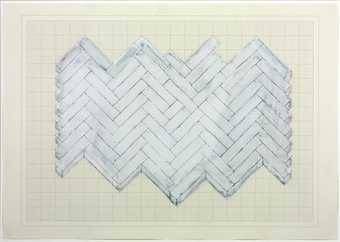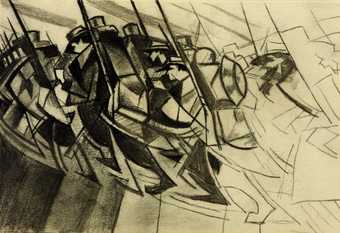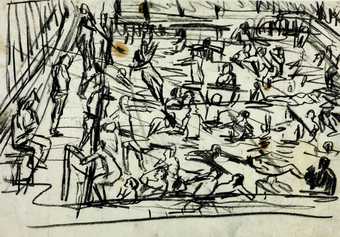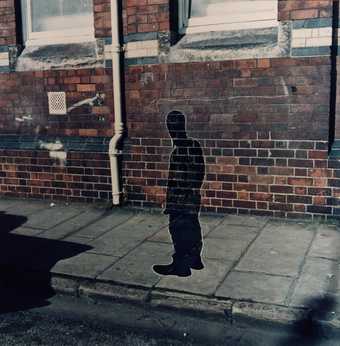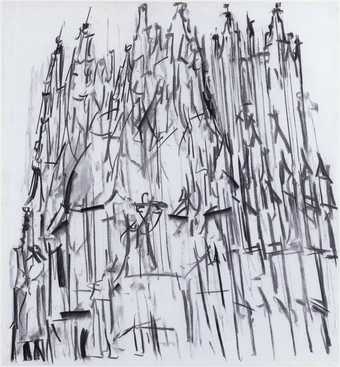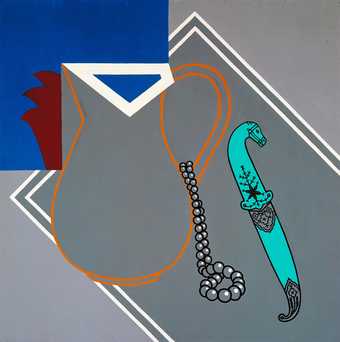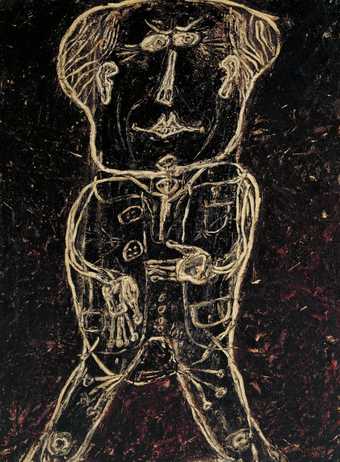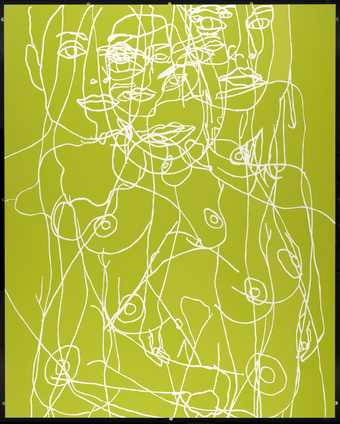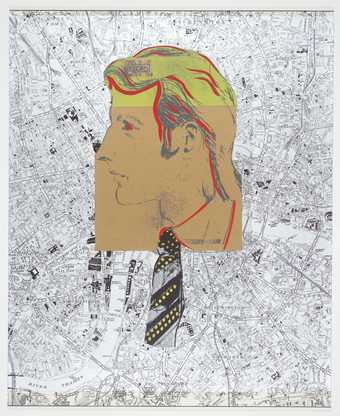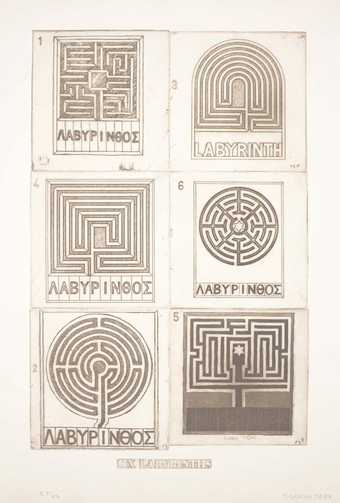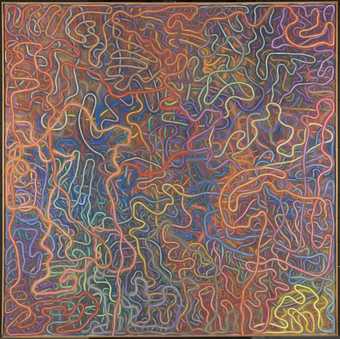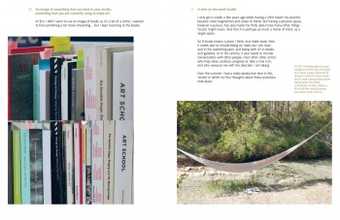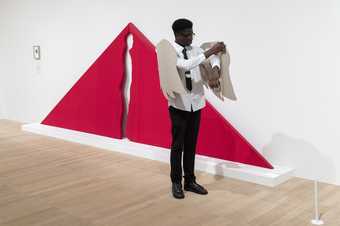An outline is just a line that draws or defines the outer edge of something – right? Think again…and think outside the box (or outlined shape!).
Outlines that pop!
Painter Gary Hume uses outline in his abstracted paintings and prints of people, plants and other natural subjects to define flat areas of colour and pick out features. These are sometimes raised outlines created by the thick edges of the painted shapes, but also delicate details, scratched into his lush paint surfaces.
The bright, fun feeling of Gary Hume’s paintings echo earlier pop art approaches. Patrick Caulfield combined bold outlines with flat areas of colour to create bright, brash interiors and still lifes. He also added highly realistic bits to the paintings making them into surprising and often disorientating spaces.
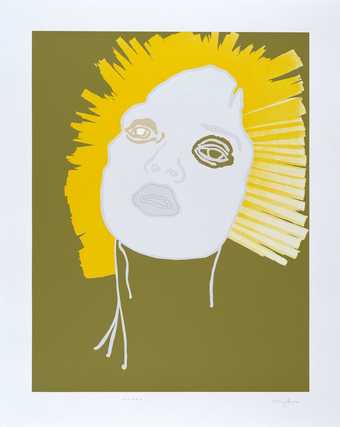
Gary Hume
Angel
(1998)
Tate
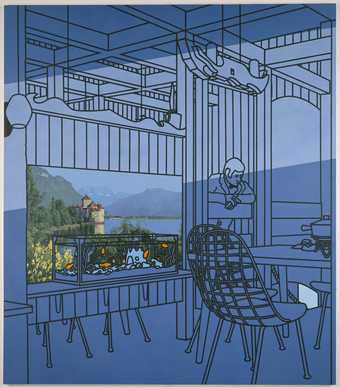
Patrick Caulfield
After Lunch
(1975)
Tate
Comic books were a big inspiration for pop artists. Roy Lichtenstein adopted comic book techniques to make his iconic paintings. The lines not only outlined shapes but also fizzed with movement and power. Pop artist Andy Warhol began as a graphic artist, so it isn’t surprising that his early graphic training, with its use of a simple line, influenced his later art which features bold outlines and bright colours. Jasper Johns overlays a series of numbers – outlined in bright colours and filled in with expressive mark-making to create his painting 0 through 9 1961.
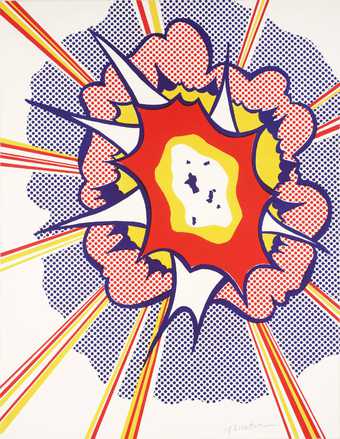
Roy Lichtenstein
Explosion
(1965–6)
Tate
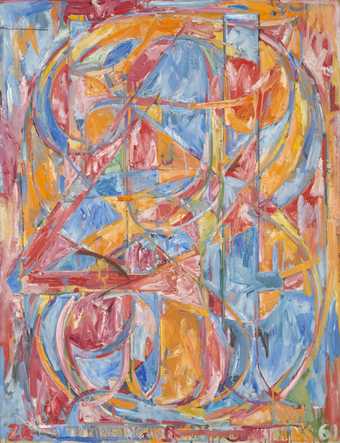
Jasper Johns
0 through 9
(1961)
Tate
From graphic to graffiti
The pop artists weren’t the first to make use of the graphic qualities of line. Nineteenth century artist Aubrey Beardsley's elegant pen and ink drawings use simple black and white outline and tone. But his subject matter is often anything but elegant! He depicts the crazy partying, seedy nightclubs and often grotesque characters who inhabited his social world.
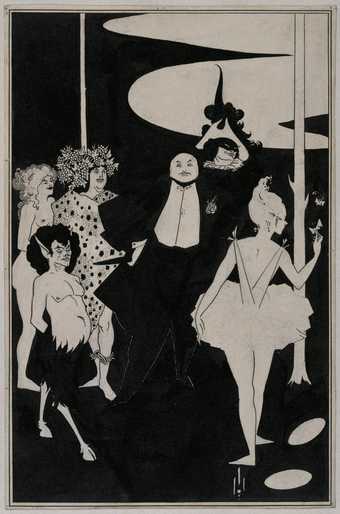
Aubrey Beardsley
Design for the Frontispiece to John Davidson’s Plays
(1894)
Tate
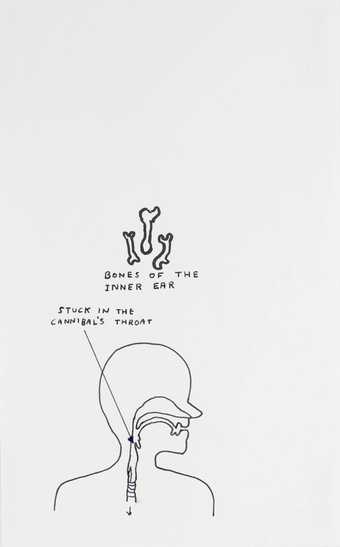
David Shrigley OBE
Untitled
(1999)
Tate
David Shrigley also uses graphic style to explore his world (and the unique way that he sees it!). Although his drawings look childlike and make us laugh, they also often reflect what we as humans think, feel and ponder over.
Artist Jean Dubuffet embraced the child-like qualities of drawing. He invented the term art brut which is French for ‘raw art’. Art brut is art that expresses raw emotions as a response to looking at the world. He used the simple outlines of children’s drawings and also graffiti as inspiration for his own style.
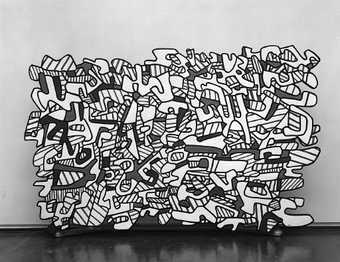
Jean Dubuffet
Hopes and Options
(1971)
Tate
Jean Dubuffet’s work influenced artist Keith Haring who was also inspired by graffiti art and cartoons. He was a social activist and his simple outline drawings in which he explores big subjects such as birth, death, sexuality and war, respond to the street culture of New York where he lived in the 1980s.
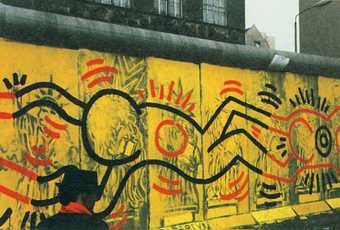
Section of Haring’s mural
Berlin Wall 1986
Photograph: www.kuzdas.eu © Heinz J. Kuzdas
Much more than just a line…
We may think of outline drawing as one of the most basic forms of art. But its simplicity is deceptive. A simple line can say and do a lot. This line drawing by vorticist artist Henri Gaudier-Brzeska looks like a very simple drawing of a dog, but the lines not only outline the dog’s shape but also express its three-dimensional form. A subtle curve can suggest a muscle, a crooked line or an ear. The dog looks alert – as if it is about to leap off the page. Brzeska often abstracted his observation line drawings and used these as a starting point for his abstract sculptures.
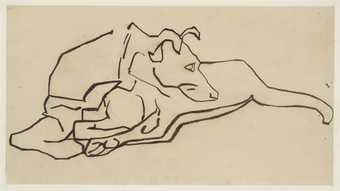
Henri Gaudier-Brzeska
A Dog
(c.1913)
Tate
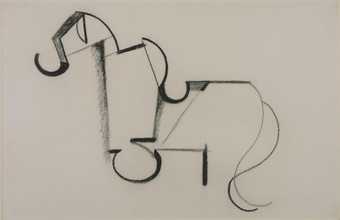
Henri Gaudier-Brzeska
Abstract Drawing
(c.1914)
Tate
Tracey Emin uses simple outlines to create moving diary-like images of painful memories or experiences. These are sometimes monoprints, (monoprints are made by drawing a line with paint or ink onto glass and then putting paper over this to create a print); and sometimes stitched with embroidery thread onto fabric or canvas. Artist Grayson Perryalso uses simple outlines to tell stories. He too draws on his memories and experiences, as well as addressing social and political issues. His lines are etched into the surface of ceramic pots.
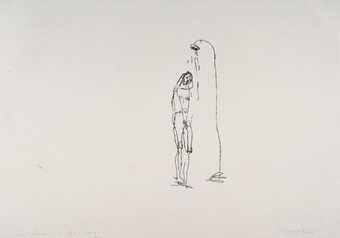
Tracey Emin
Sad Shower in New York
(1995)
Tate
Have you ever wanted to ask Tracey Emin a question about her work? We invited people to do just that!
Abstract outlines
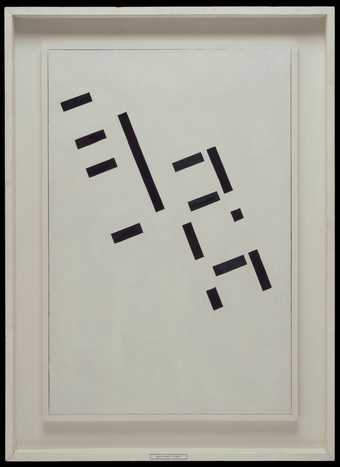
Keith Coventry
East Street Estate
(1994)
Tate
This may look like a completely abstract drawing. But artist Keith Coventry has used the maps found at the entrance of council estates marking out the blocks of buildings, as the source for his drawing. In creating these detached abstract drawings he questions the neatness with which the complexity of thousands of lives can be reduced to a few cool rectangles
Architecture is also the starting point for Sarah Morris's paintings and prints. A lattice of geometric lines filled in with bright glossy colours echo the lines and surfaces of modern cityscapes: skyscrapers, grids of streets, advertising hoardings and angled glass and concrete structures.
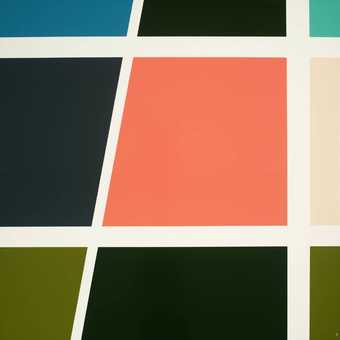
Sarah Morris
[no title]
(2001)
Tate
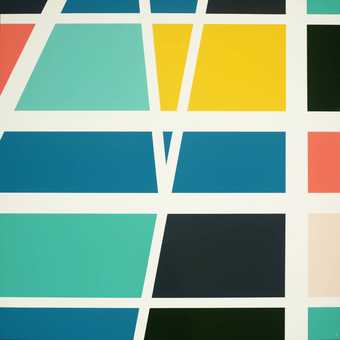
Sarah Morris
[no title]
(2001)
Tate
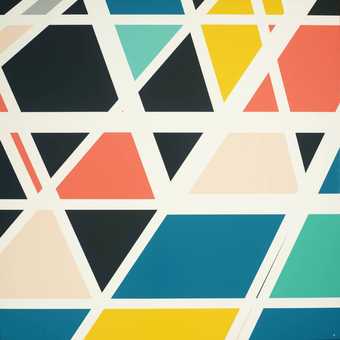
Sarah Morris
Dulles [Capital]
(2001)
Tate
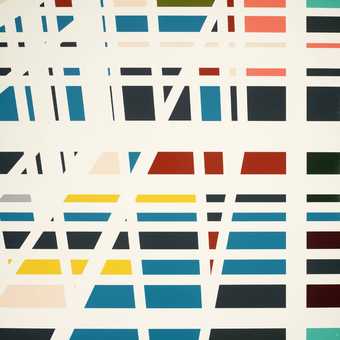
Sarah Morris
[no title]
(2001)
Tate
Sol LeWitt has taken the geometric outline off the page and put it into three-dimensional space. He uses a simple form such as an open or closed cube as a basic module to create more complicated structures of outlines in space.

Sol LeWitt
Two Open Modular Cubes/Half-Off
(1972)
Tate
Artist Paul Klee once described drawing as taking a point for a walk. This is exactly what artist Bernard Cohen has done with his painting Floris 1964. He starts with a random shape and then draws around the shape again and again to create a pattern of outlines. In other works he uses a single unbroken line to create loopy outline artworks.
Animating outlines
Lines don’t have to be static. As well as delineating a shape, the word outline suggests planning or creating a rough sketch of something. In his portraits, as well as drawing the features of his sitters, Frank Auerbach seems to be feeling and delineating their shapes on the paper. The many outlines feel like search lines. This also gives the drawings a sense of movement (like the ‘whooosh’ lines in cartoons).
Other artists have also explored the potential of outlines to suggest movement. Marcel Duchamp's Nude Descending a Staircase uses the outline shapes of a figure, repeated to create a sense of the figure walking. Futurist artists such as C.R.W. Nevinson, Giacomo Balla and Gino Severini also explored the potential of line to suggest movement.
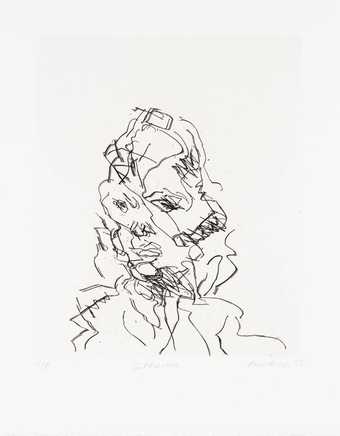
Frank Auerbach
Catherine
(1989)
Tate

Marcel Duchamp Nude Descending a Staircase No.2 1912
Philadelphia Museum of Art: The Louise and Walter Arensberg Collection, 1950 © Succession Marcel Duchamp / ADAGP, Paris and DACS, London 2008
An outline doesn’t just have to be something that sits on a two-dimensional surface. Alexander Calder explored lines in space – and their potential for movement. Find out more about Calder and his work in this article or visit our online guide to Calder’s exhibition at Tate Modern.
Lines in the landscape
Outlines in art aren’t confined to drawings, paintings and sculptures. Ancient civilisations created drawings directly into the landscape by cutting into the soil or piling it up to create mounds.
Land artists such as Robert Smithson and Richard Long also used lines to highlight features in the landscape and to explore our relationship with it. For Sahara Circle Long arranged a ring of rocks around a circular area that he had cleared in the Sahara desert. The simple outline takes on a mysterious presence. Long has commented:
I think circles have belonged in some way or other to all people at all times…They are universal and timeless, like the image of a human hand. For me, that is part of their emotional power
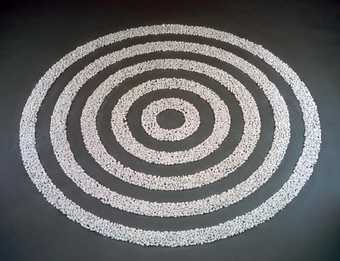
Richard Long CBE
Small White Pebble Circles
(1987)
Tate
Other artists have used outlines in the landscape to explore boundaries and borders. For his work Green Line 2004 Francis Alÿs wanted to draw attention to a border between two countries. He walked along the armistice border in Jerusalem which separated Israeli and Palestinian territories, dribbling a line of green paint as a he went. The border was originally penciled on a map at the end of the war between Israel and Jordan in 1948 and known as ‘the green line’. Though greeted by onlookers with some bewilderment, Alÿs wanted to draw attention to the original path of the border line at a time when a separation fence was being built that did not follow the original mapped border.
HAVE A GO!
We’ve pulled together some thoughts to help you get started researching outline as a theme for your exam project:
- Do you know any graphic novelists whose work reflects contemporary life? How do they use line to tell a story?
- Make simple outline drawings of narratives or memories. Think of different ways you could present these…using printmaking, stitching or by even scratching them into soft materials such as clay or plaster
- Find images of graffiti that uses simple outlines. Could you make use of this style in your work to express issues that matter to you?
- Try making a simple line drawing from observation and then use it to create an abstract outline drawing or painting
- Think about borders, boundaries and other outlines in the landscape. Could you use these lines as a starting point for your research? Explore our Maps album for more art inspiration
- Show us your art: Use the Tate Collectives Showcase to store and share your ideas and art.

